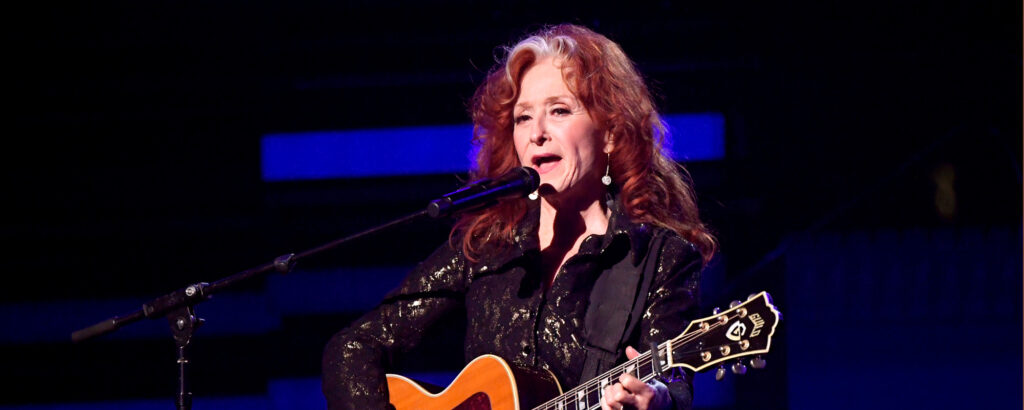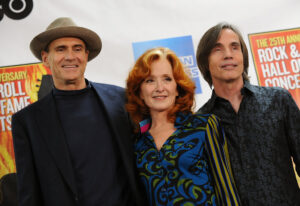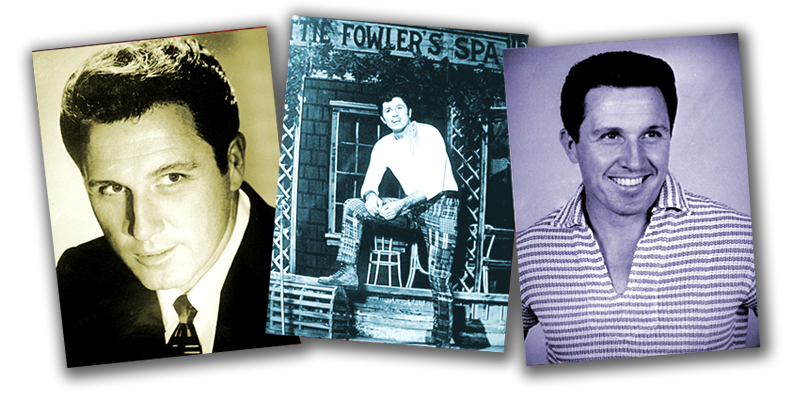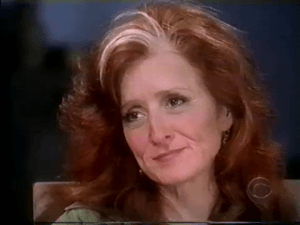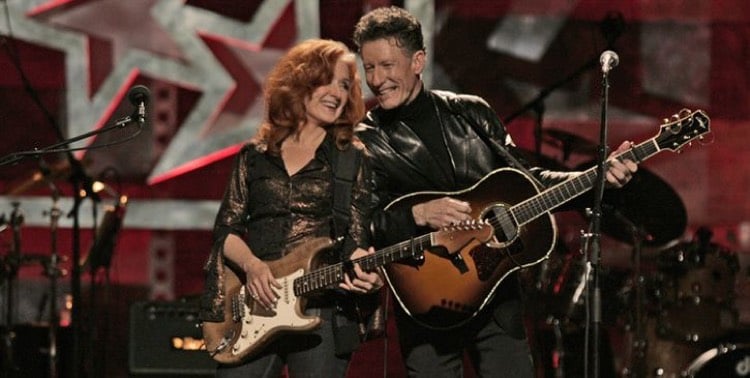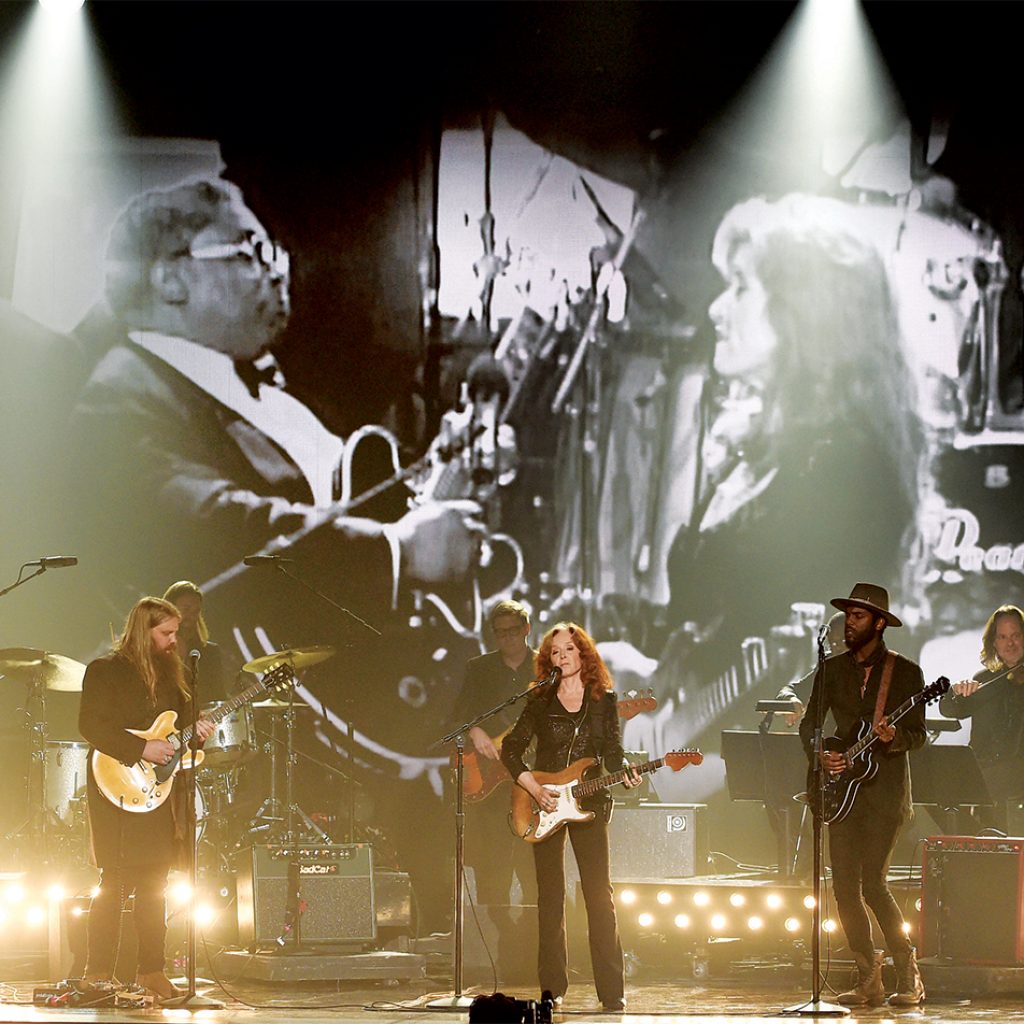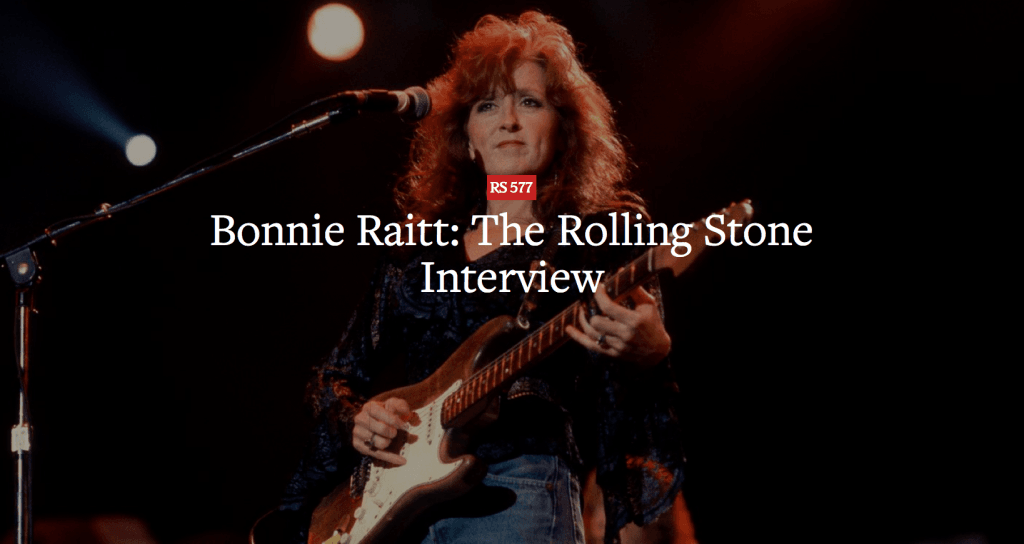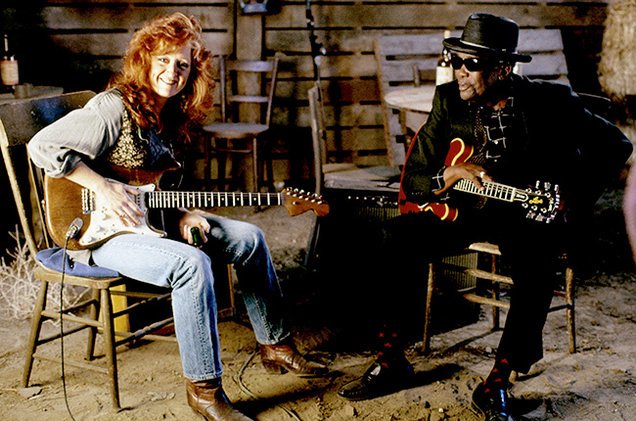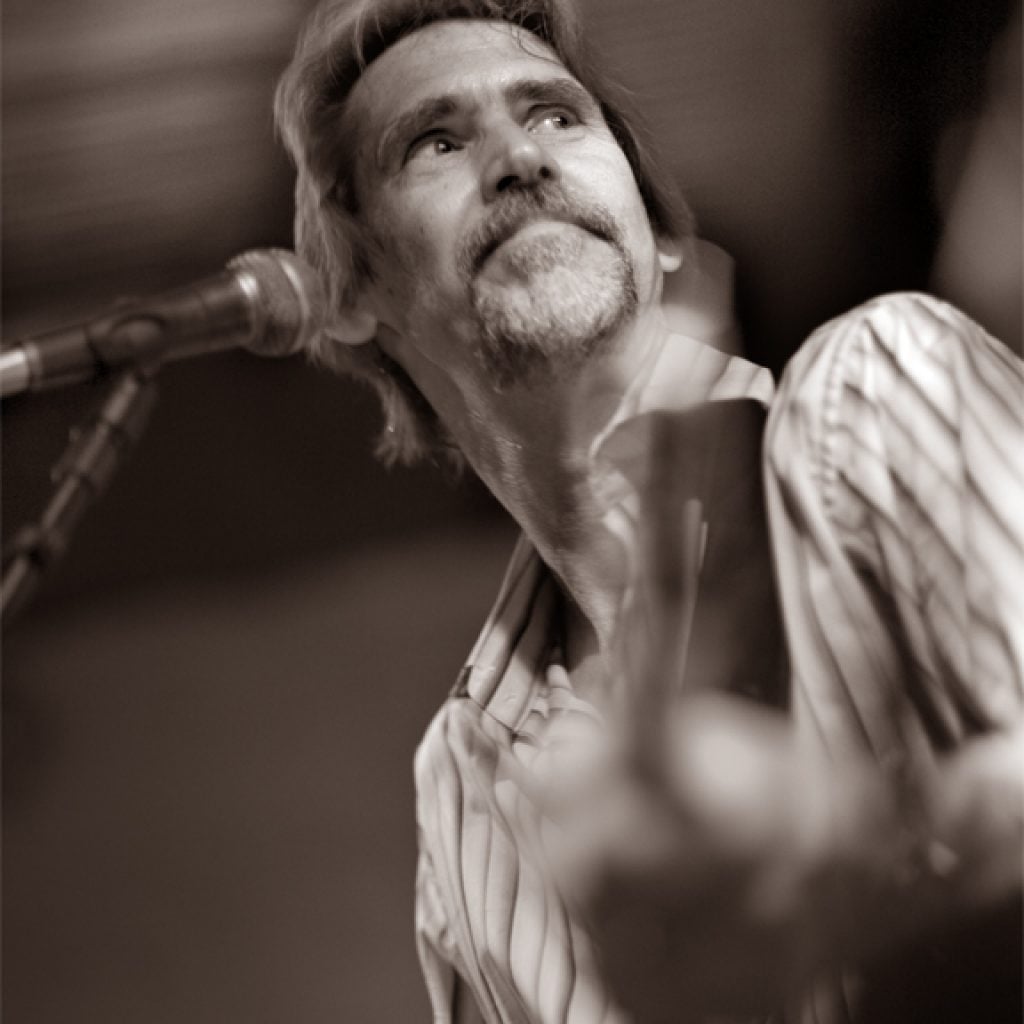
Bonnie Raitt is as organic as rubbing two sticks together. And while both can produce a spark, the album catches fire with much greater ease.
Released 50 years ago this season and brimming with unstoppable style, the album is a testament to the less-is-more approach and a snapshot of a time in contemporary music that’s almost unimaginable now.
Critics tend to favor the follow-up, 1972’s Give It Up, which has a clearer sound mix and, arguably, more discernable access to Raitt’s strengths as a player. While there’s some truth to this assertion, it’s the warts-and-all honesty of its predecessor that’s the more precious commodity. It’s exactly what Raitt and her chosen producer, Willie Murphy, had set out to capture: a spontaneous, raw recording with no overdubs. Their plan worked marvelously.
My first Bonnie Raitt album was 1982’s Green Light, a comparatively tightly-produced affair that flirted with reggae and some of the underground new wave runoff infiltrating the mainstream. At the time, my guitar teacher, Harry, encouraged me to check out 1974’s Streetlights for her cover of Joni Mitchell’s “That Song About The Midway,” which I’d been learning to play. Side by side, Joni’s version seems rigid. But that’s not so much a reflection of her style as it is Raitt’s uncanny ability to unhinge the rhythmic locks in a song and replace them with heaps of nuance.
Raitt’s dad had been a big hit on Broadway (Carousel, Pajama Game). Typical of that style, John Raitt sang on the beat and played it straight; he was celebrated for it. Perhaps as a byproduct of this, his daughter learned how to vocally toy with the beat, dodging and weaving around it, resulting in something that sounds simultaneously assured and laid back, even when the tempo is more aggressive.
AUDIO: Joni Mitchell “That Song About The Midway”
Harry favored Raitt’s version of ‘Midway’ because of this and wanted me to understand the difference between the two approaches. I was vaguely aware that there was something grittier happening on her first few albums, but as an adolescent, listening to the blues had about as much appeal as eating cooked spinach–something adults seemed to enjoy that I just couldn’t derive pleasure from. I failed to understand how it was the root of so much that I worshipped in music until much later.
During my sophomore year of college, Raitt’s Nick of Time came into the school radio station. I began including it in my show and read somewhere that she’d gotten sober. At just 19, I’d developed an uncomfortable awareness that my own drinking might be problematic, and I became curious what her early records sounded like in contrast with Nick of Time. I started playing “You’ve Been in Love Too Long,” from 1973’s Taking My Time on my radio show and delved into Give It Up. I didn’t give Bonnie Raitt a listen until I was 22, a year older than she was when she recorded it.
I’d inadvertently saved the best for last.
Granted, I tend to wince at the idea of describing an artist’s debut as their best record, especially with a 50-year-plus career. It implies a disappointing flame-out and detracts from everything that came after. I remember asking Harry about how Streetlights stood up as an album while I learned the Joni Mitchell song, contemplating a purchase on my tight teen budget. He said, “It’s about as good as any of her mid-70s records, which is pretty damn good.” I always remembered this distinction and the careful implication that there was something special about what came before the middle of the decade.
Raitt had enrolled at Harvard’s Radcliffe College as an African Studies major in 1967 and wasn’t even thinking about performing professionally or releasing records. But within two years, she was playing clubs and coffeehouses for extra money. Blues promoter Dick Waterman took her under his wing, landing her some key opening slots and access to folks like Son House and Fred McDowell, with whom she became friends. Eventually, she had her way with the execs at Warner Brothers, who gave in to her demand for total artistic control in the process of signing her. This meant she called all the shots in the development of Bonnie Raitt (as well as the eight albums that followed), including the recording location and the players involved.
In August of 1971, Raitt rented an old fishing camp on Enchanted Island, along Lake Minnetonka in Minnesota, to get the album done. She has since said she favored the Minneapolis area because she believed that the music scene there had less of a color divide. The camp itself reminded her of adolescent summers in the Adirondacks where she’d discovered her talent and learned to mimic records from the folk revival.
Since those early days echoing folk acts like The Kingston Trio at summer camp with her brothers, Raitt had developed a fascination with blues music. Inspired by John Hammond’s performances on Blues at Newport, 1963, she soaked the label off of a glass pill bottle and began playing bottleneck slide guitar—an atypical skill for a middle-class white gal. Though seemingly unintentional, she was toying with conventional notions of race and gender from the get-go.
As the story goes, there were upwards of forty people coming and going from the camp, creating a festive, communal feel. Half of them appear in a grainy photo on the back cover. Junior Wells (harp) and AC Reed (sax) drove from Chicago and took advantage of the lake fishing. A couple weeks in, recording finally began. The studio was a two-story garage converted into a barn with the engineers (Dave and Sylvia Ray) recording on the upper level and the players down below. Repeated listens reveal the space in the room, particularly when woodwind and brass instruments are played.

From the moment opener “Bluebird” comes honking and squealing into view, it’s clear that something unusual is afoot. It’s said a good singer knows how to sell a song. Raitt not only sells it, but she also infuses it with so much personality, it bowls you over. Opening the record with a well-known Stephen Stills song—the one song on the entire record that most listeners would likely be familiar with—it’s as if she’s taunting us with her ability to inhabit someone else’s story. With the aid of the Twin Cities band Willie and the Bumblebees (featuring producer Murphy on piano) plus her regulars, Freebo (bass) and second guitarist Peter Bell, the group creates a joyous racket, making the song really swing. It’s nothing short of a revelation. By stripping away the suite-like psychedelia of the Buffalo Springfield version and filling the space with bent notes and plenty of New Orleans sass, Raitt creates something entirely new. A baritone voice anchors the wordless chorus midway, keeping the groove alive as the instruments cut out… save for a cowbell. It might even seem silly if the results weren’t so damn sweet.
From there, the saloon-like feel of “Mighty Tight Woman” saunters in, the first of two Sippie Wallace tunes and the introduction to the tender/tough persona that recurs throughout Raitt’s career. The album’s two originals, “Thank You” and “Finest Lovin’ Man” also feed into this, portraying a woman that is gracious and loyal while also maintaining an upper hand. She takes pride in treating her man well and criticizes other women for not knowing how to behave. Chinks in the armor appear with Lenny Welch’s torchy “Since I Fell For You” and John Koerner’s “I Ain’t Blue,” but the assertive character returns for the final track, Wallace’s “Women Be Wise.”
The material chosen for the record amounts to an eclectic mix of blues and folk with the Stills tune and a rollicking version of The Marvelettes’ “Danger Heartbreak Dead Ahead” thrown in for good measure, thus beginning a tradition of Raitt juxtaposing seemingly disparate writers (and genres) on her albums that continues today.
The instrumentation on Bonnie Raitt is just barely the stuff of a rock album and includes some unusual punctuation from hambone-style knee slaps, a tuba, a stick tapping a plastic pitcher… even a badminton shuttlecock in a cup. Raitt would go on to prefer electric guitars, but her debut is largely (not completely) an acoustic affair—gentler, perhaps, but certainly not timid. Her arrangements of Tommy Johnson’s “Big Road” and Robert Johnson’s “Walking Blues” are proof positive that the album is much more adventurous than just another entry in the growing canon of docile folkie fare.
Bonnie Raitt isn’t much of a singer-songwriter record, either. And really, Raitt is more of an interpreter, contributing only a couple originals to each album. But in the fall of 1971, singer-songwriters were the closest she came to having industry peers.
It was a banner year for the emerging genre: Carole King’s Tapestry, Joni Mitchell’s Blue, and Mud Slide Slim and the Blue Horizon by James Taylor had all been released in the months prior. And yet, even as an outlier, she was disrupting the template the others were establishing from the very start. Tougher than Joni Mitchell, less urban than Laura Nyro, more exotic than Carole King, and punchier than James Taylor, Bonnie Raitt was steeped in a coffeehouse-blues hybrid that none of them could believably deliver. Raitt made it all sound easy and natural. The dim-lit intimacy that frames the album is reflected in the barroom-orange tint of the cover photo.
Raitt says she was preoccupied with authenticity through the first 15 years of her career, which is also the length of her tenure with Warner Brothers and the contract that gave her 100% creative control. She now admits that it also fed her alcoholism; living hard, she felt, gave her the license to properly deliver the material. When she got sober toward the end of the 80s, signing with Capitol and releasing the Don Was-produced Nick of Time, it drastically shifted the trajectory of her career. She became a superstar. Simultaneously, the blurred lines in her music became a bit sharper—more focused and direct.
There’s plenty to be said about her accomplishments since, but the warmth permeating Bonnie Raitt isn’t something that can be replicated. It remains singular, 50 years on.
VIDEO: Bonnie Raitt Live on PBS Soundstage 1971













 Visitors Today : 116
Visitors Today : 116 Now Online : 1
Now Online : 1






